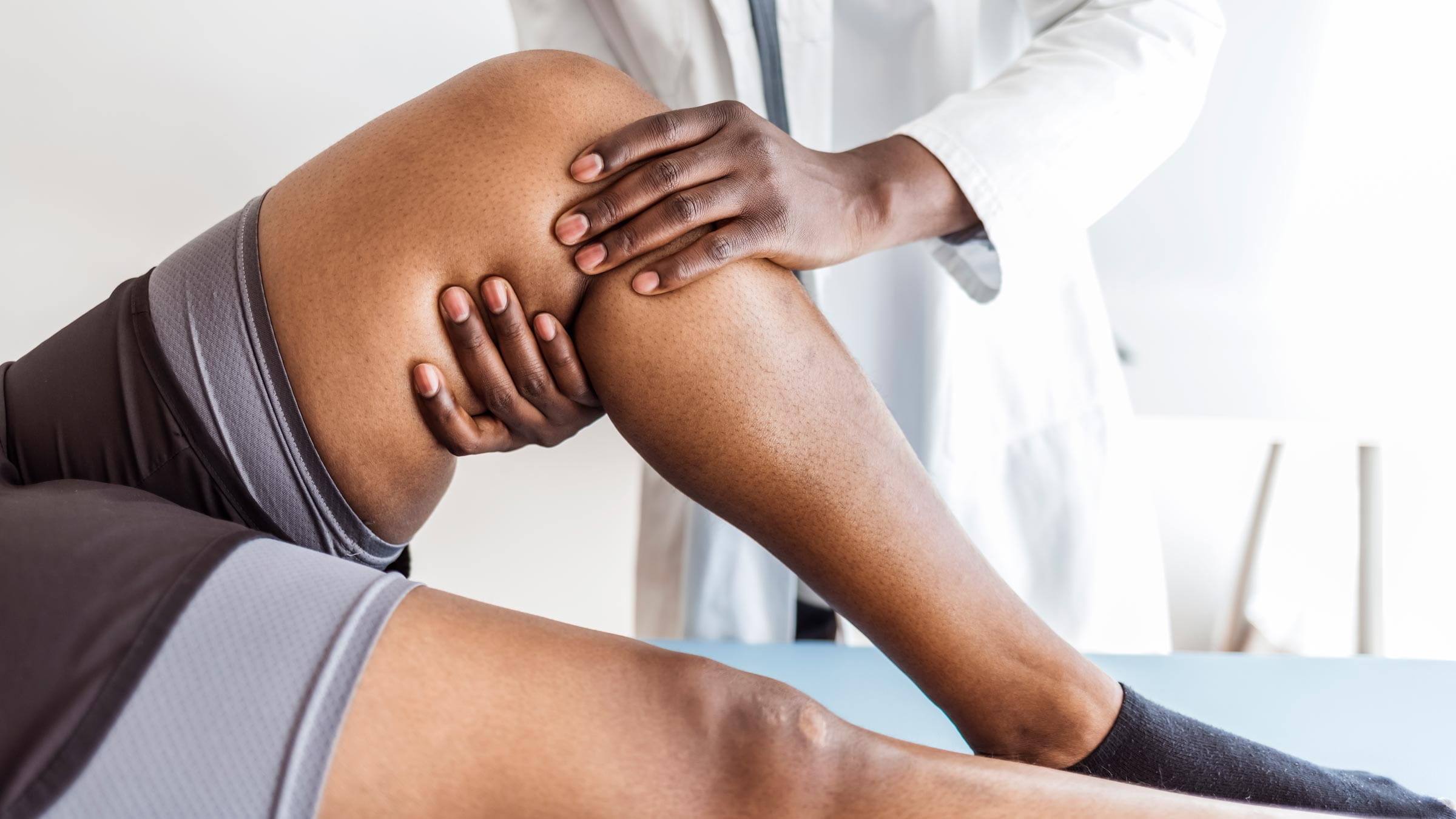
Everyone experiences aches and pains in their joints from time to time. But if your pain consistently cuts through even the strongest available dose of Tylenol, it's safe to say you may have a more serious joint condition causing trouble behind the scenes.
Why am I experiencing joint pain?
Your joints contain a combination of cartilage and fluid in the space where two bones connect. This carefully balanced structure helps the joint bend smoothly without the bones rubbing together, which would cause severe damage and pain.
When that cartilage starts breaking down, due to injury, disease or age, increased friction between the bones can cause the joint to become inflamed. You feel this inflammation through aches, stiffness or sharper pains around the joint when you move. Joint pain (or arthritis) can also develop from inflammation of the tendons, ligaments or muscles surrounding the joint.
What causes arthritis?
Arthritis can be caused by a number of genetic and lifestyle factors. If the condition runs in your family, you may be more likely to develop joint pain yourself. Your level and type of physical activity can also impact when and how you experience joint pain throughout your life.
When should I seek professional help for my pain?
Most common joint pain can be treated with a combination of rest, ice and over-the-counter anti-inflammatory medications like Advil, Tylenol and Aleve. If you're still in pain after taking these medications for extended periods of time, or your pain becomes more frequent and severe, I recommend speaking with a medical professional about next steps for pain management.
You should also see your primary care provider or another clinic if you experience an acute injury due to sports or other contact. Sometimes a twist, fall or collision can cause long-term damage to your joints or the surrounding muscle even if you are only in pain for a few days after the accident. Our Urgent Care options at the Ohio State University Wexner Medical Center offer walk-in medical assistance and X-ray imaging services.
What treatments are available?
We consider five main treatment options for patients with arthritis and related joint pain.
Rest and lifestyle changes Your pain may be caused by a single activity. If going for a run causes pain in your knees or hips, resting for a time and switching to other forms of exercise, or strengthening other parts of the body, may be all that's needed to control it.
Medications Over-the-counter anti-inflammatory drugs are usually effective for relieving pain. Otherwise, your primary care provider can prescribe several other types of medications like meloxicam, Voltaren, and Celebrex to help manage prolonged or more intense joint aches and pains.
Physical therapy (PT) Physical therapy can address a wide range of mobility, strength and stability problems you may experience in your day-to-day life. For example, PT can help you improve your range of motion if you have stiffer joints. If you have hip or knee pain when you walk, PT sessions can also adjust your gait and balance over time to put less stress on those joints.
Injections Cortisone and similar steroid shots can help decrease swelling and inflammation in and around the joint. The Ohio State Wexner Medical Center also offers a unique platelet-rich plasma procedure, where we inject a small portion of healing proteins from your own blood to the site of pain. These proteins help stabilize the biological environment around your joint, allowing it to heal.
Surgery Joint replacement surgery is exceptionably reliable for treating more serious injuries and inflammation. Even patients who are relatively young and active frequently undergo joint surgery to help them stay healthy and mobile.
Treatment for life
When you suffer from joint pain, you may be reluctant to pursue treatment. It can be tempting to simply adapt to the pain by avoiding the activities you used to enjoy.
Fortunately, there are many pathways to managing your joint pain, no matter the severity. Your primary care provider and joint specialists can help determine a treatment plan that will enable you to live a healthy, happy life with as little pain as possible.

Ready to stop the pain?
Schedule an appointment with one of our orthopedic experts.
Get started




